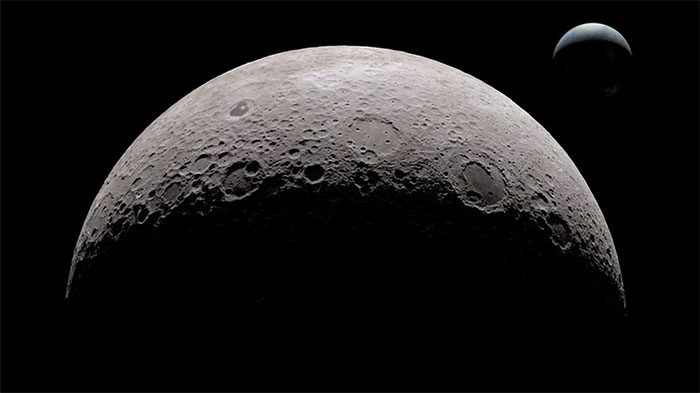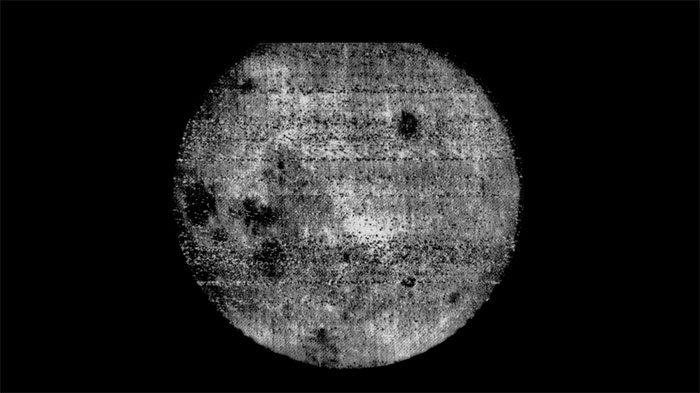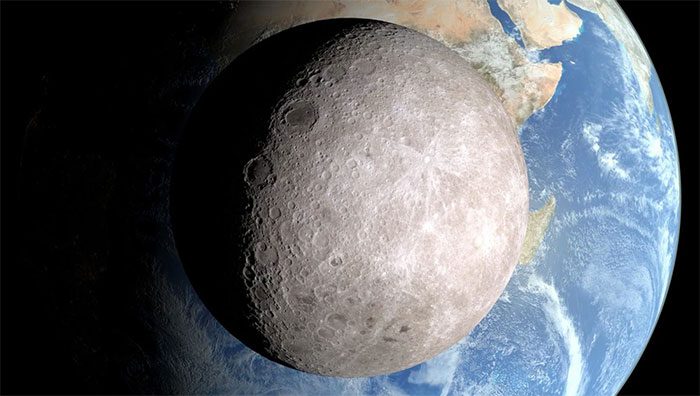In reality, the “dark side” of the Moon is not permanently dark as we once thought!
On August 23rd, a highly anticipated day for India and the global astronomy community will arrive as the Chandrayaan-3 mission is set to land the Vikram lander on the lunar surface at 18:04 Indian time in the harsh South Pole region of the Moon.
If the landing is successful, India will not only join the ranks of a select few countries that have successfully landed on the Moon (alongside the Soviet Union, the United States, and China) but will also become the first nation to successfully land in the dark region of this natural satellite. Previous landings have all occurred under sunlight conditions near the Moon’s equator.
Russia’s Luna-25 mission failed during its orbital descent preparations for a landing in the South Pole due to technical issues. Why is the dark South Pole region of the Moon so difficult to access?

What is the mystery of the dark side of the Moon? (Illustration: Internet).
Known for its cold temperatures, rugged terrain, and thin atmosphere (which does not aid in slowing down the lander and affects GPS functionality), the Moon in general, and the obscured South Pole in particular, remain a challenging scientific puzzle for modern technology. In return, this area could be a “treasure trove” of water ice and many valuable minerals. This is why the dark side of the Moon is a target for many space-faring nations in the 21st century.
In recent days, we have heard much about the term “the dark side of the Moon” to describe something mysterious, harsh, and unknown. This region is thought to be the side that we can never see from Earth. Opposite it is a dense, cold expanse of space.
The harshness of the “dark side” of the Moon – as we call it – is certainly true. It is much more challenging than landing on the “light side.” However, the reality is that many of us may not fully understand the nature of the area known as the “dark side” of the Moon, how it operates, and how it has remained hidden from scientific efforts from Earth until now.
What could be on this side of the Moon? What are the conditions like there? Is it truly always dark? Let’s explore this issue right away.
Unraveling the Mystery of the Dark Side of the Moon
First, the fact that we cannot see the dark side of the Moon from Earth does not mean we do not know what it looks like. In humanity’s journey to explore space, we have had the opportunity to glimpse parts of it from spacecraft launched by the Soviet Union and the United States.
In October 1959, the Soviet spacecraft Luna-3 became the third spacecraft to reach the Moon and the first to send back images of the far side of the Moon. The photos were noisy and unclear, but they provided a glimpse into a part of the Moon that had never been seen from Earth before.
In 1968, astronauts aboard Apollo 8 were the first to directly observe the dark side as they orbited the Moon. So what does the dark side of the Moon look like?

Photo of the dark side of the Moon taken by Luna-3. (Photo: NASA).
Firstly, the description of “the dark side” is often misunderstood as a darkness that permanently covers one-half of the Moon’s surface. And that we would easily observe the dividing line between the light and dark regions, and by crossing this boundary, you would enter the dark side – a place we can never observe from Earth. However, this is not accurate.
This is because, just like Earth, the Moon has daytime and nighttime. Therefore, if you were to camp on the Moon and stay at that spot, you would eventually see the Sun rise and set – meaning you would experience both day and night. So to be more precise, the Moon has a part that experiences day and a part that experiences night, just like Earth.
The daytime side is the side currently receiving sunlight, while the nighttime side is turned away from the Sun.
What does this have to do with the side we see when we look at the Moon from Earth? This is when things can get confusing. The side of the Moon that we see is sometimes the daytime side and sometimes the nighttime side. It all depends on when we are looking at the Moon.
A more accurate term to describe the side of the Moon we see is the near side (the near side, to distinguish it from the far side). The near side will always face us, while the far side will always face away into the darkness. This is true even on the opposite side of Earth.
Both the near side and the far side of the Moon experience day and night. Both receive sunlight at certain points in the Moon’s orbit around Earth. We cannot see the far side of the Moon, even when it is illuminated by the Sun, because the far side always faces away from us.

How the Moon orbits Earth and spins on its axis. Just like Earth rotates on its axis and orbits the Sun. (Photo: Internet).
So why do we only see one side of the Moon from Earth, and how does the Moon’s cycle relate to this?
It takes about 29 days for the Moon to complete an orbit around Earth. This is also the same time it takes for the Moon to make one rotation on its axis. Because the rotation period and the orbital period of the Moon take the same amount of time, we always see the same side of the Moon no matter when we look at it.
This may sound confusing, but here’s a simpler way to visualize it.
If the Moon did not rotate, we would be able to see all sides of its surface. Similarly, if the Moon’s rotation were faster or slower, we would eventually get glimpses of the entire Moon. So why does the Moon rotate only once every time it orbits Earth?
The short answer is gravity.

The Moon and its formation history continue to captivate scientists to this day. (Photo: Internet).
The gravitational pull of Earth has slowed the Moon’s rotation down to its current rate. Its rotation has been “locked” in with the time required to orbit Earth.
Therefore, there is no permanently dark side of the Moon (meaning there is no side of the Moon that is eternally deprived of sunlight).
However, the dark side of the Moon still holds many mysteries for humankind. Due to the Moon’s large mass blocking radio signals coming to and from Earth, it may take many more years for aerospace engineers to figure out how to explore the far side on a larger scale.
We may even begin to see NASA and other agencies set up relay satellites in lunar orbit to facilitate such exploration.
Moreover, the Moon’s thin atmosphere does not hinder spacecraft (to slow down), so landing softly on the surface of this natural satellite requires significant technical expertise. Coupled with the blockage of signals transmitted back to Earth, a lander must operate autonomously for its landing. This is why landing on the Moon has never been easy.



















































